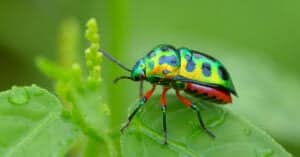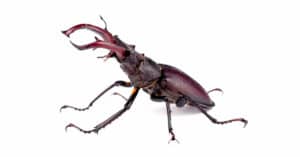Beetles may be stereotyped as pests, just like any other creepy crawly. But in reality, they are a diverse, fascinating group of insects that are stunning and relevant to the environment and ecosystem. Biologists estimate that there are at least 400,000 different species or varieties of beetles. Some are incredibly helpful, while others can be awful pests. As Texas is a massive state with diverse topography and wildlife, it is no surprise that the Lone Star State crawls with insects – especially beetles. But what are the beetles that live in Texas?
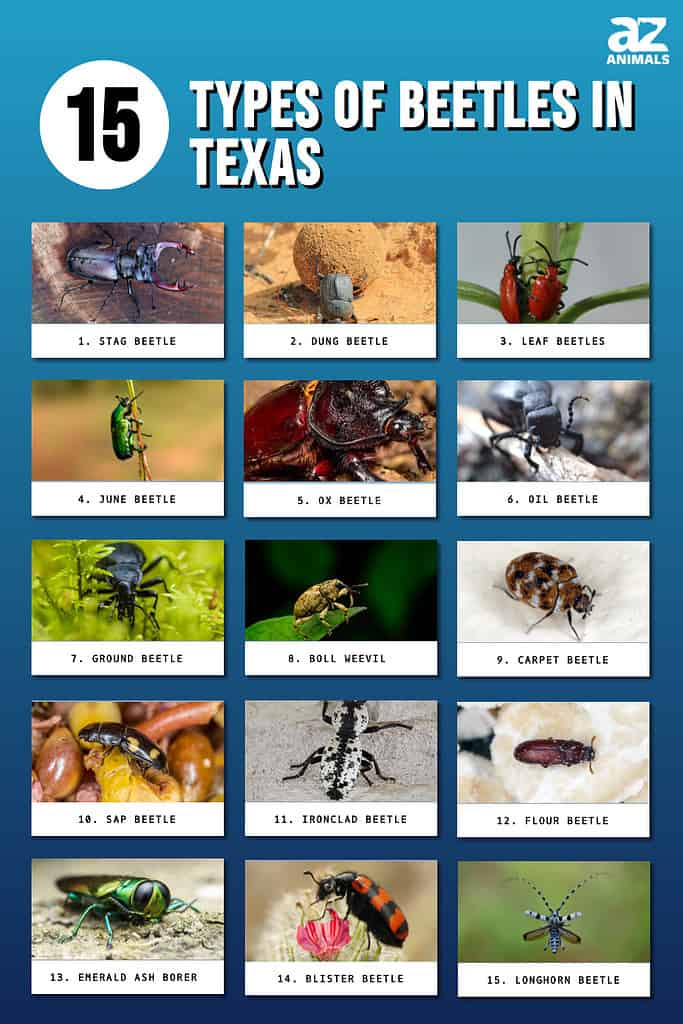
Most insects, that feed on the plant life that thrives in such conditions, find Texas’ recent wet weather to be music to their antennae. Plenty of beetles are found in the state. Below, we list down 15 Texas beetles you’ll likely meet.
15 Types of Beetles in Texas
1. Stag Beetle
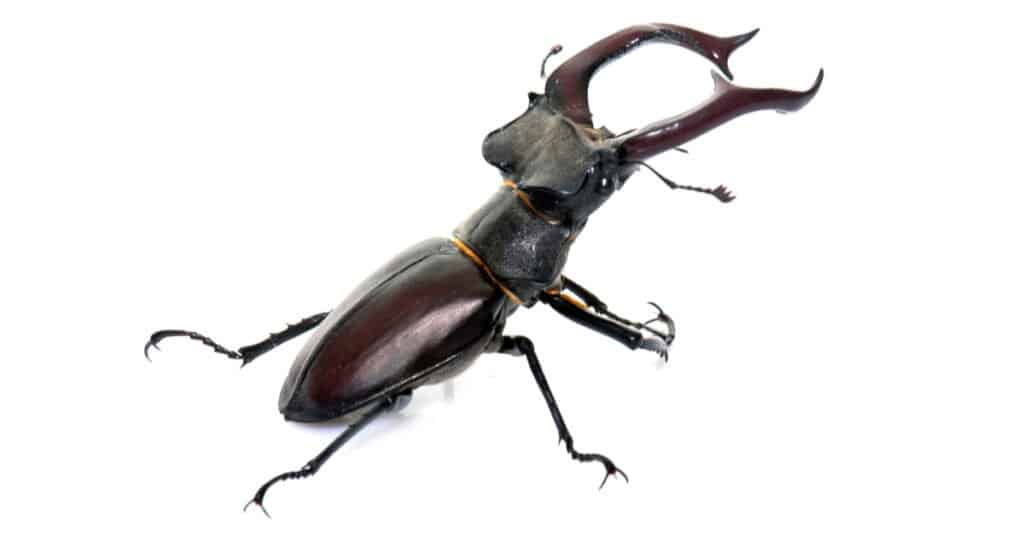
Stag beetles can be found in regions with loose soil and high yearly average temperatures.
©cynoclub/Shutterstock.com
In Texas, there are only a few different species of stag beetles. Males of the huge stag beetle have longer, more intricately branched mandibles, and males of some tropical varieties have extremely enlarged mandibles. A large segmented body and two pairs of wings define an adult. It is often black or brown, but a small number of species display an array of vivid hues, including metallic green and iridescent red. Although Texas species are rarely wide enough to be classified as pests, adults may munch on foliage.
Most of the time, this species can be found in regions with loose soil and high yearly average temperatures. Although they frequently inhabit forested areas, they can also be found in many unexpected places.
2. Dung Beetle
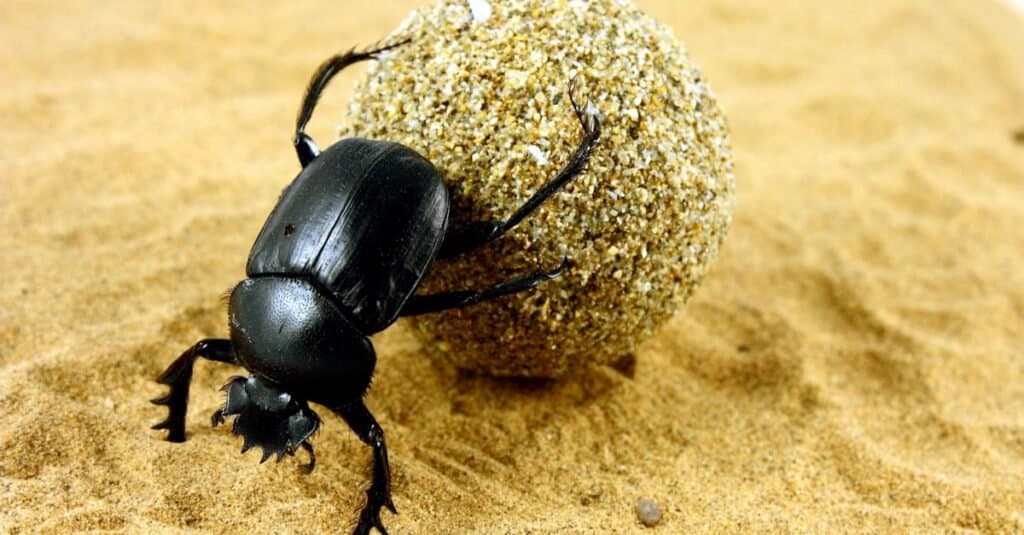
Dung beetles have an overall metallic blue-green and copper color.
©efendy/Shutterstock.com
Male and female dung beetles have an overall metallic blue-green and copper color. In the 1970s, USDA scientists introduced one species, Onthophagus Gazella Fabricius, widespread throughout the state. Eighty percent of cattle droppings are removed in some areas of Texas by these insects. They bury or consume a large portion of the residual animal feces, which has various positive environmental effects. This also helps to enrich the soil by removing waste from the surroundings and reducing the fly population. One of nature’s primary scavengers, dung beetles can be found in almost all ecosystems on Earth.
3. Leaf Beetles
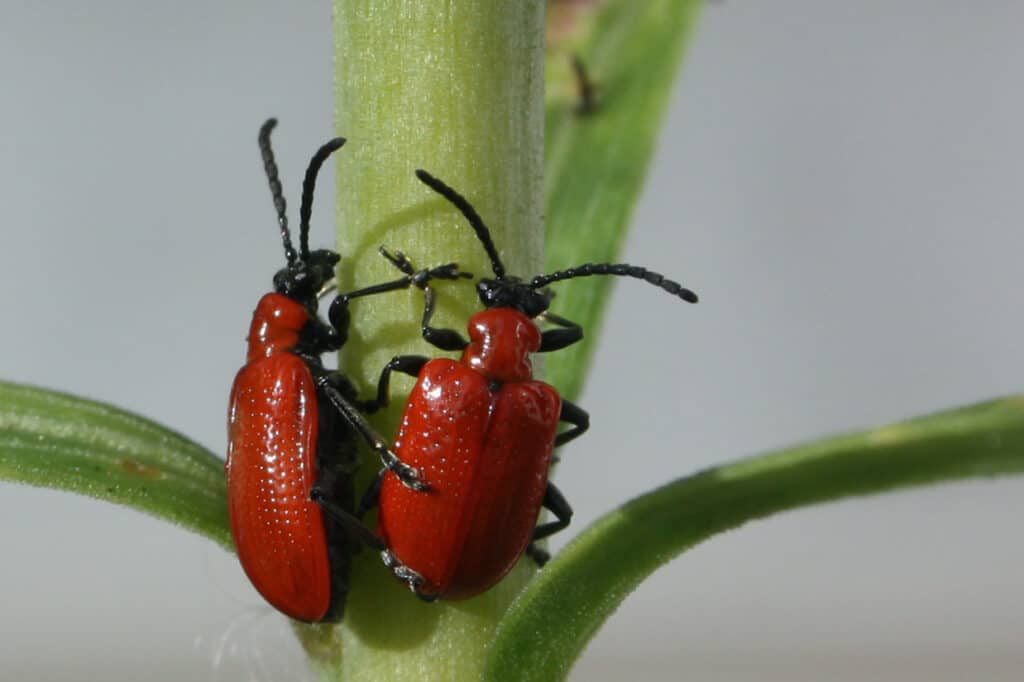
Leaf beetles prey on different species of elm trees.
One of the biggest and most widespread beetle families is the Chrysomelidae, which has over 37,000 species in over 2,500 genera. Approximately 1/4 inch long, with body color ranging from yellow to brownish-green, adult beetles are characterized by black spots on the head and thorax and broad black stripes that follow the edges of the outer wing cover. These alien species prey on different species of elm trees, particularly Siberian and European elms.
4. June Beetle

Because June bugs do not sting or bite and resemble most beetles, they are less dangerous to people than other insects.
©Pan Xunbin/Shutterstock.com
Texas is home to more than 100 scarab beetle species, also known as white grubs, May beetles, or June bugs. Because June bugs do not sting or bite and resemble most beetles, they are less dangerous to people than other insects, and June bugs are less likely to encounter humans because they are more active at night. The normal diet of adult June bugs consists of flowers, leafy plants, corn, walnuts, oak trees, small grains, potatoes, strawberries, and other crops.
5. Ox Beetle
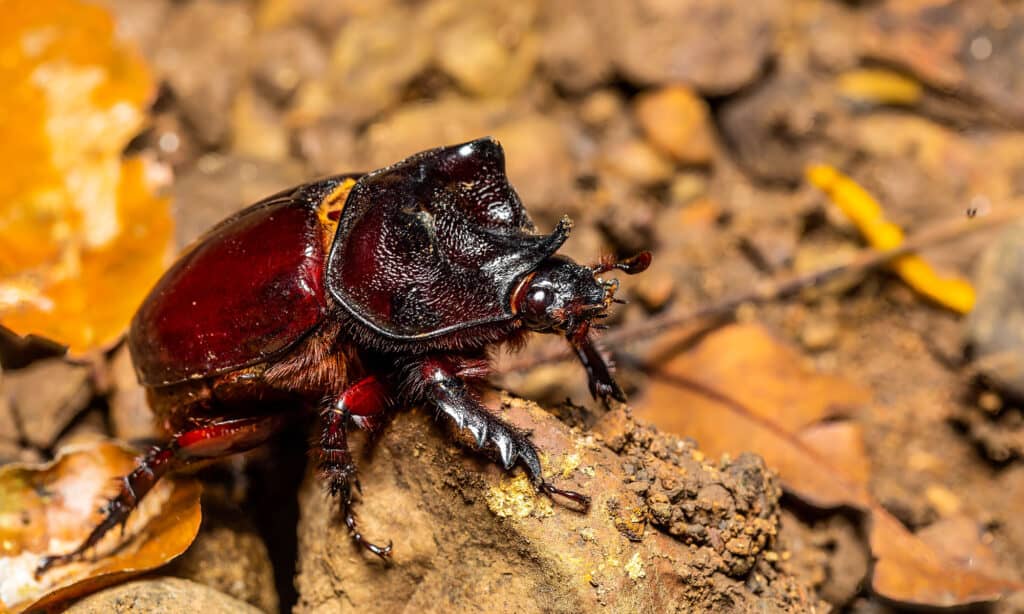
Ox beetles are nocturnal.
©Artush/Shutterstock.com
Stout ox beetles have a lot of hair on their belly. Since they are nocturnal, they are typically observed at night and are entirely dark brown. Most of the states along the Gulf and Atlantic coasts are home to this beetle species, which prefers pine forests as its habitat.
6. Oil Beetle
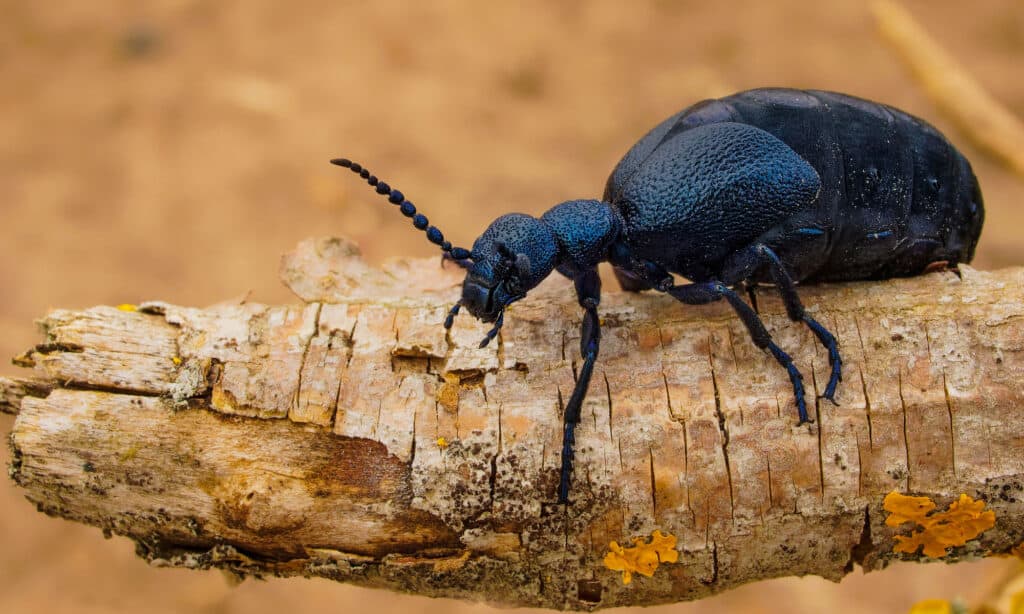
When physically disturbed, oil beetle poses a threat to people.
©Michal Pesata/Shutterstock.com
One variety of blister beetle is the oil beetle. Cantharidin is a caustic chemical that this beetle species can release from its abdomen. When physically disturbed, the American oil beetle, sometimes referred to as the black oil beetle, poses a threat to people. These stubby bugs have long abdomens and short wing pads. They are slow-moving, flightless beetles that protect themselves by spitting out oil drops containing cantharidin from their joints, a process known as reflexive hemorrhage. Human skin develops painful blisters as a result of this harmful fluid.
7. Ground Beetle

Ground beetles are frequently seen under stones, bark, and logs.
©Nikolas_profoto/Shutterstock.com
Under stones, bark, logs, and other on-the-ground trash, ground beetles are frequently seen. They move quickly when startled. They hunt for prey at night, and some species are drawn to lights. Long-legged black ground beetles have been reported to bite people occasionally. Pygidial glands in their lower abdomen secrete noxious substances to ward off predators. When threatened, the beetle resorts to its protective strategy. Although it rarely bites, this toxic liquid’s emission can cause skin irritation and burning.
8. Boll Weevil
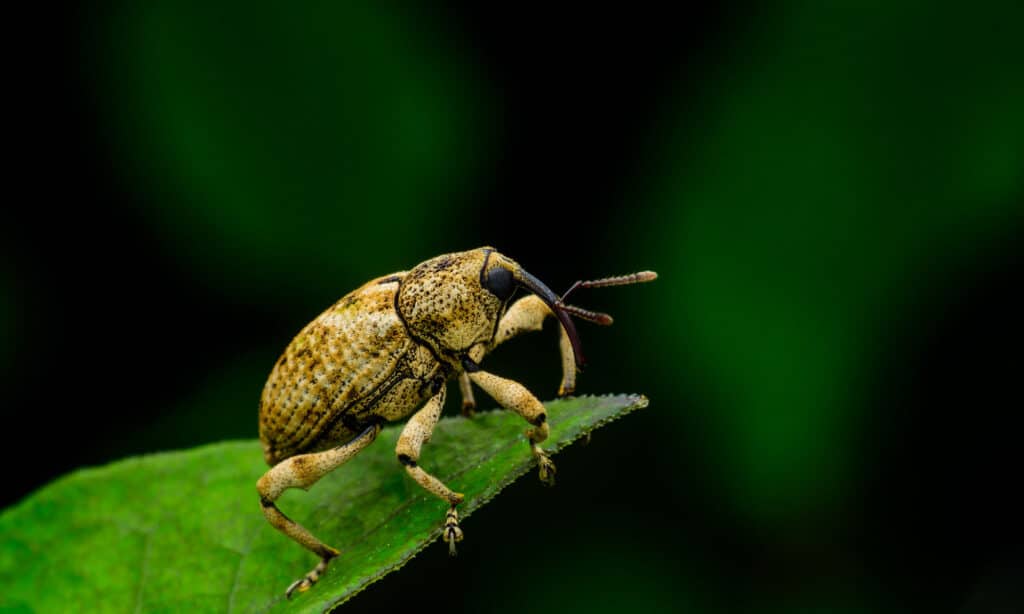
Adult boll weevil range in size from 1/8 to approximately 1/2 inches long.
©Samuel Lam/Shutterstock.com
Since at least two thousand years ago, people in Mexico have been aware of this insect’s devastation. The boll weevil was initially identified as a cotton pest by American entomologists in 1880, although its introduction to Texas appears to have been proclaimed in 1894. The adults range in size from 1/8 to approximately 1/2 inches long, are fuzzy, brown to grayish brown, and have pronounced snouts bearing the mouthparts. In the spring, adult weevils eat the fragile cotton terminals, cotton squares (flower buds), and bolls for their food (fruit). Weevils use their chewing mouthparts at the tip of their “snout” to drill holes into the squares or bolls.
9. Carpet Beetle
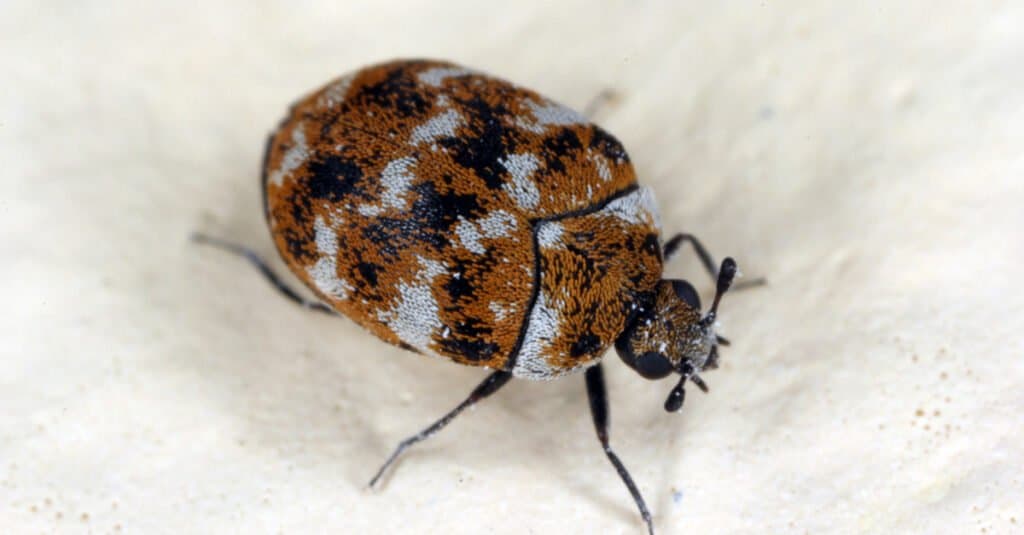
Some carpet beetles are completely dark, while some have black, brown, and white spotted patterns.
©Tomasz Klejdysz/Shutterstock.com
Texas is home to tiny, colorful insects known as carpet beetles. Some are completely dark, and some have black, brown, and white spotted patterns. They are very small and have a circular to oval form. There are three common types of carpet beetles that you could encounter in your house in Texas: the common carpet beetle, the varied carpet beetle, and the furniture carpet beetle. These three share a striking resemblance in appearance. Common carpet beetles can be distinguished from the other two by the flaming orange stripe that runs along their center. However, the variation in colors between these insects may be difficult to distinguish because they are only 1/16 of an inch long.
10. Sap Beetle
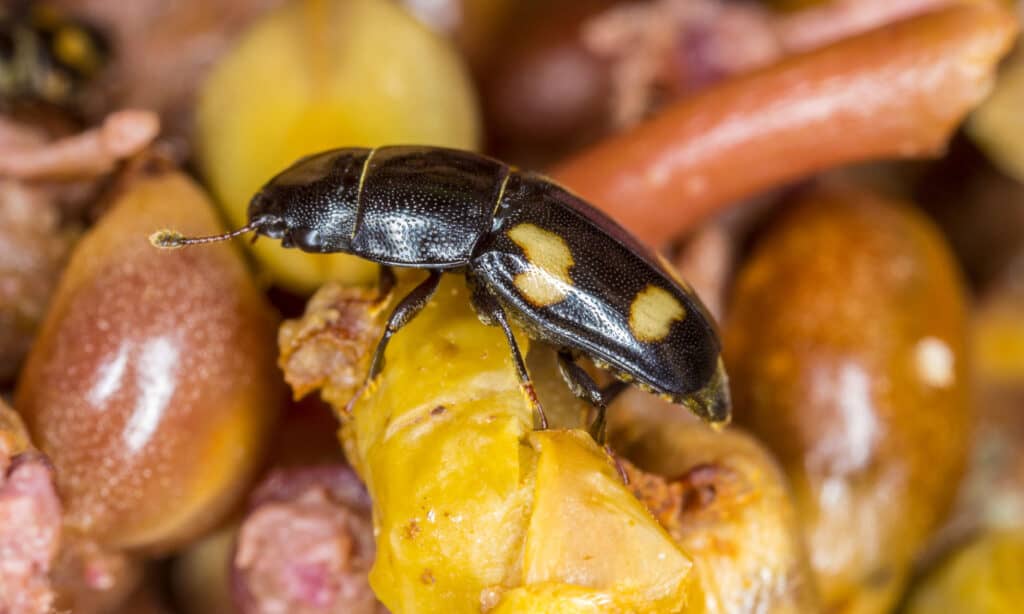
Sap beetles have broad, flattened bodies and big eyes.
©Tomasz Klejdysz/Shutterstock.com
Sap beetles are very tiny. They have broad, flattened bodies and big eyes. The last three segments of the short antennas are invariably clubbed. Adults of some species are frequently seen in flowers, particularly cacti. They are drawn to sap, fermenting fruit, and decomposing plant materials. Some are buried behind the bark.
11. Ironclad Beetle

The ironclad beetle’s thick shell helps it retain water as it spends most of its time in the desert.
Your first indication that this insect has a durable outer shell should be its name. The United States and Mexico southwest are home to the ironclad beetle. It needs that thick shell to help it retain water because it spends most of its time in the desert. Ironclad beetles reside in northern Mexico and east and central Texas. The length of this stunning insect is around an inch. It has muscular black legs and a white body with black spots. Ironclad beetles eat the lichens and fungi that grow on trees and plants and can fold their antennas and act dead when threatened.
12. Flour Beetle
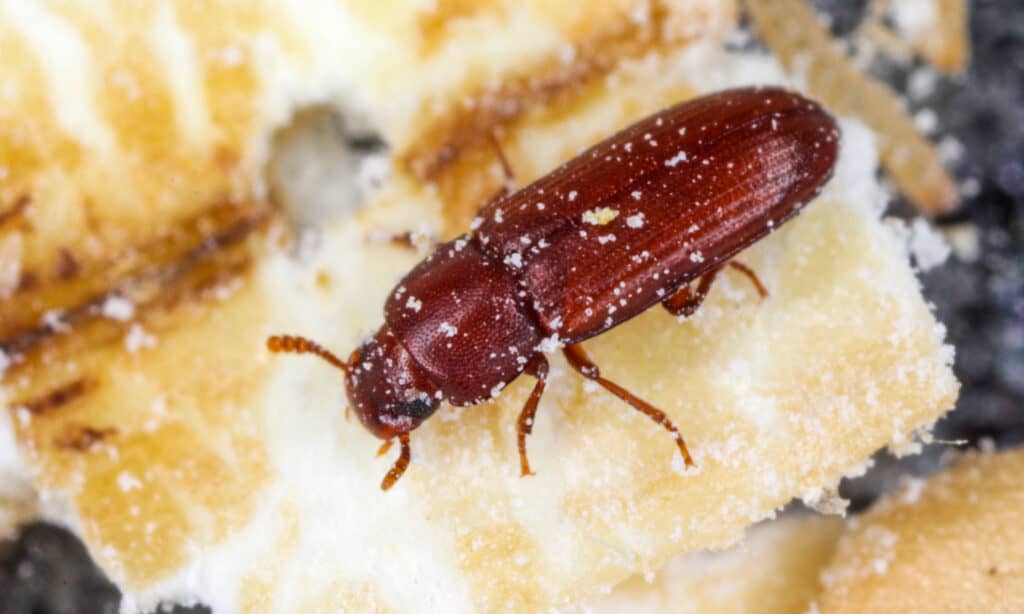
The red flour beetle is nearly the same as the confused flour beetle.
©Tomasz Klejdysz/Shutterstock.com
The confused flour beetle and the red flour beetle are two of the most often encountered flour bugs. The confused and red flour beetles are nearly identical, measuring about 3/16 inches long with flattened bodies that are well-suited to burrowing into small gaps. Examining the antenna is the easiest way to tell these two species apart. The confused and red flour beetles are scavengers that consume grain products that other pests have harmed during transport or storage, and they cannot consume whole, undamaged grains.
13. Emerald Ash Borer
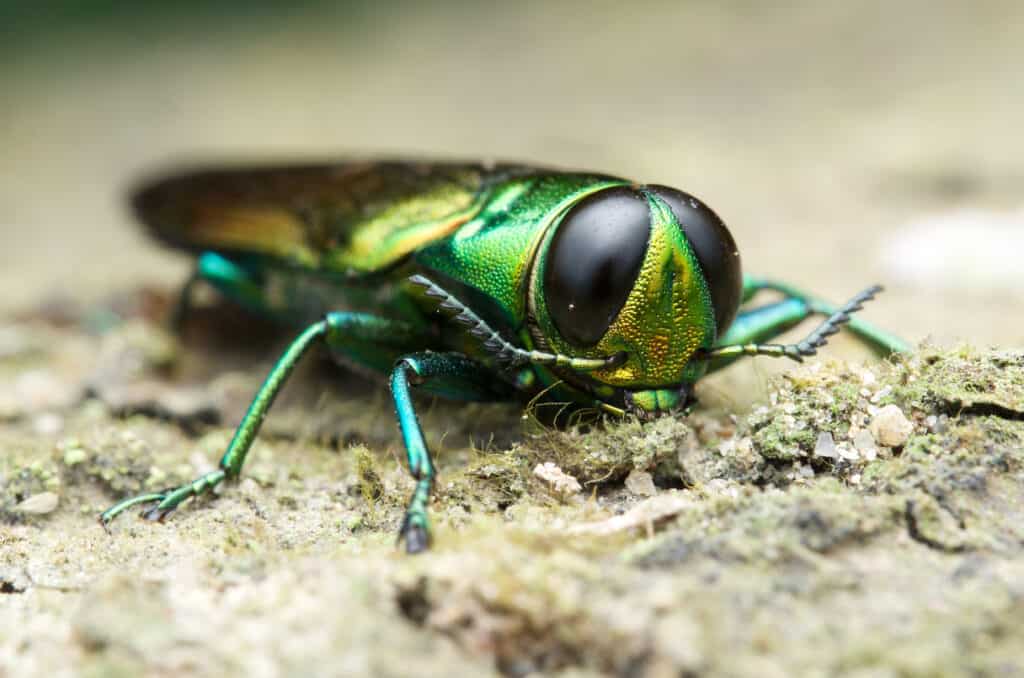
The emerald ash borer can be found in specific regions of Mongolia, Japan, China, and Russia.
©Herman Wong HM/Shutterstock.com
Harrison County in northeast Texas was where the invasive beetle was found for the first time in Texas in 2016. It’s possible that people moving from afflicted places brought wood items with them, which then spread the beetles to Texas. One of several harmful tree bugs in North America is the emerald ash borer. The insect was discovered as recently as June 2002 in Windsor, Ontario, and the southeast region of the state of Michigan. It rose to prominence as a problematic bug in less than ten years. As a native of Asia, it can be found in specific regions of Mongolia, Japan, China, and Russia.
14. Blister Beetle
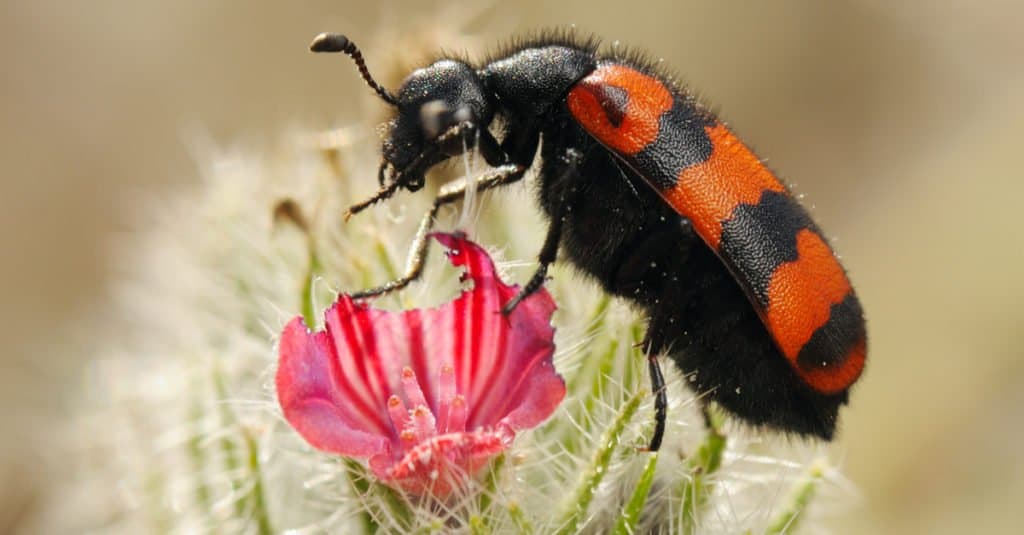
There are about 100 species of blister beetles in Texas.
©vblinov/Shutterstock.com
In Texas, there are about 100 different species of blister beetles. The adults eat a variety of vegetation, but they particularly enjoy legumes. Because the larvae consume grasshopper eggs or are parasitoids of other insect species, they are seen as beneficial. Blister beetles are non-venomous. But when they are crushed on the skin, a defensive substance called cantharidin is released, which can result in excruciating blisters and ulcers.
15. Longhorn Beetle
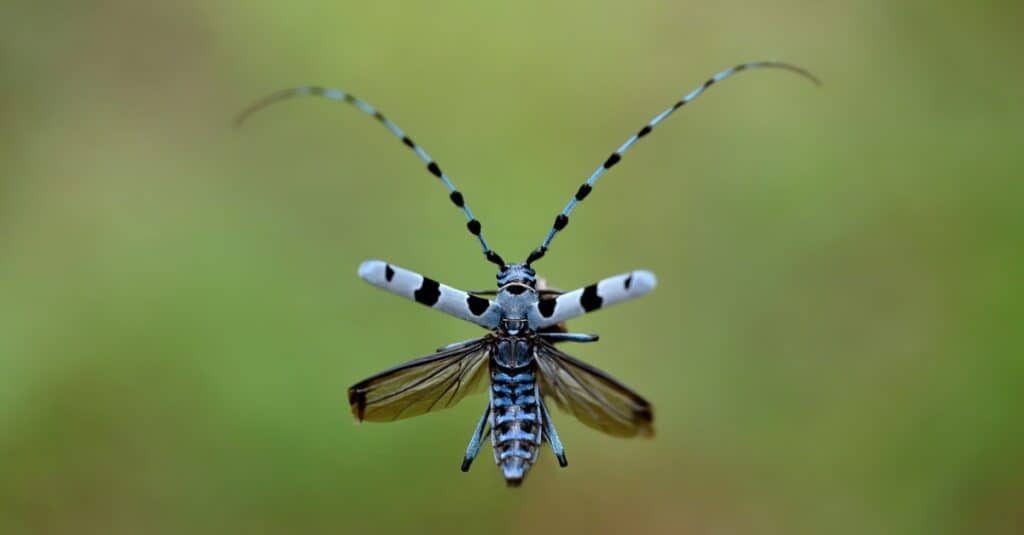
There are over 35,000 species of longhorn beetles
©iStock.com/JMrocek
Over 35,000 species of longhorn beetles, commonly referred to as long-horned or longicorns, have been identified. Many different hardwood trees contain black long-horned beetles. They have long antennae and are glossy black when they reach a length of around an inch. The black long-horned beetle’s intimidatingly large antennae can occasionally reach three times longer lengths than the body. It will bite people quickly when physically disturbed, producing excruciating pain and swelling for 24 to 48 hours.
Summary of 15 Types of Beetles in Texas
| # | Beetle | Defining Characteristic |
|---|---|---|
| 1 | Stag Beetle | Metallic green and iridescent red hues |
| 2 | Dung Beetle | Consume 80% of Texas cattle feces |
| 3 | Leaf Beetles | Prey on Elm trees |
| 4 | June Beetle | Eat flowers, shrubs, and crops |
| 5 | Ox Beetle | Have hairy bellies |
| 6 | Oil Beetle | Spit out oil drops containing cantharidin from their joints causing painful blisters |
| 7 | Ground Beetle | Lives under rocks – nocturnal, bites contain an irritating toxin |
| 8 | Boll Weevil | Known for devastating cotton crops |
| 9 | Carpet Beetle | Look like they are covered in carpet |
| 10 | Sap Beetle | Drawn to sap, fermenting fruit, and decomposing plant materials |
| 11 | Ironclad Beetle | Can play dead when threatened |
| 12 | Flour Beetle | Scavengers that consume grain products |
| 13 | Emerald Ash Borer | One of the most harmful invasive tree bugs |
| 14 | Blister Beetle | Larvae consume grasshopper eggs or are parasitoids of other insect species |
| 15 | Longhorn Beetle | Bite causes excruciating pain |
The photo featured at the top of this post is © Artush/Shutterstock.com
Thank you for reading! Have some feedback for us? Contact the AZ Animals editorial team.




